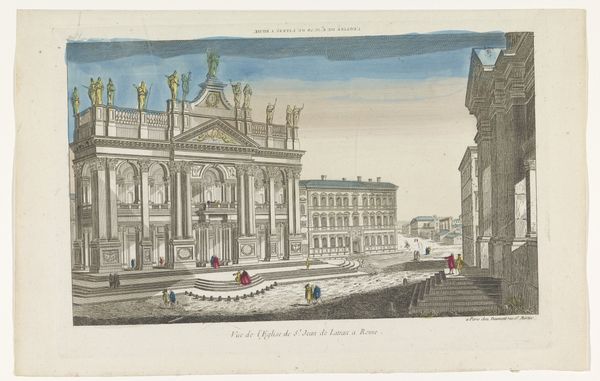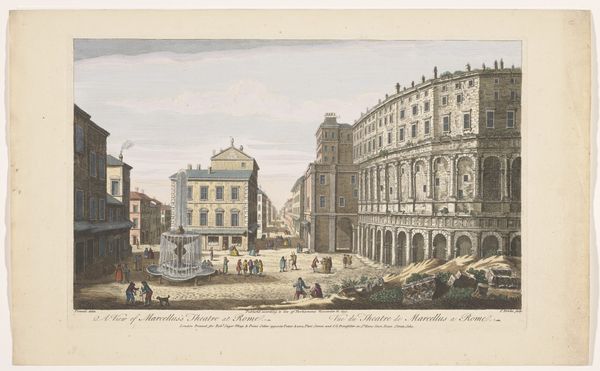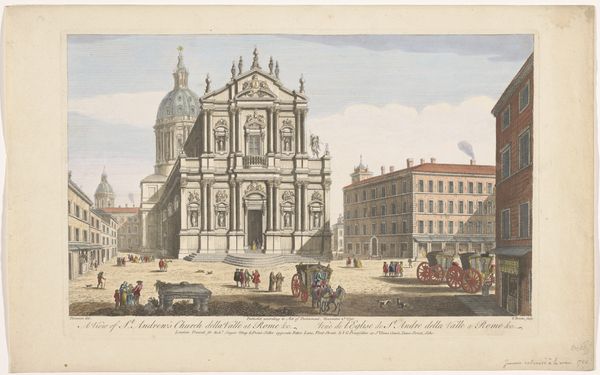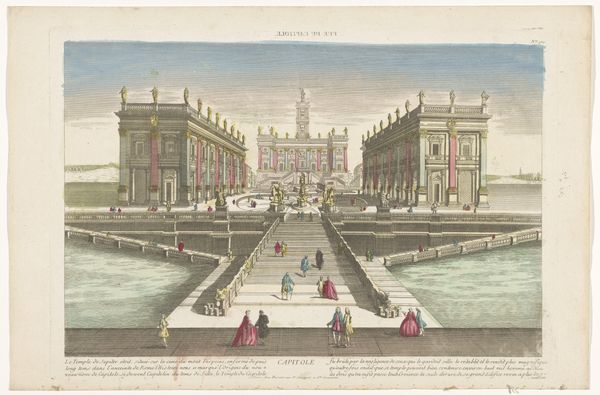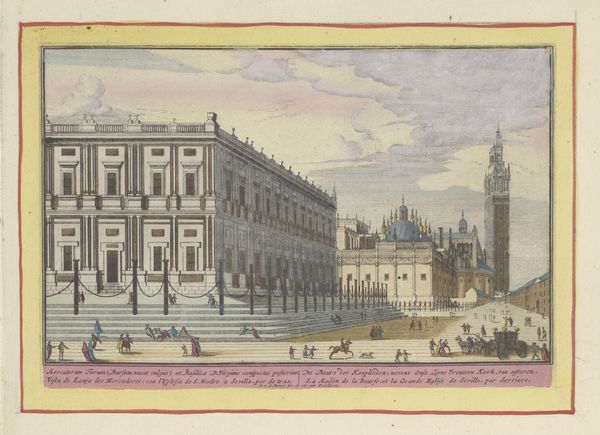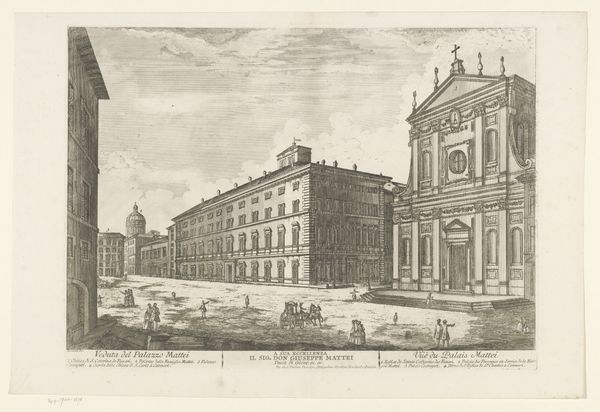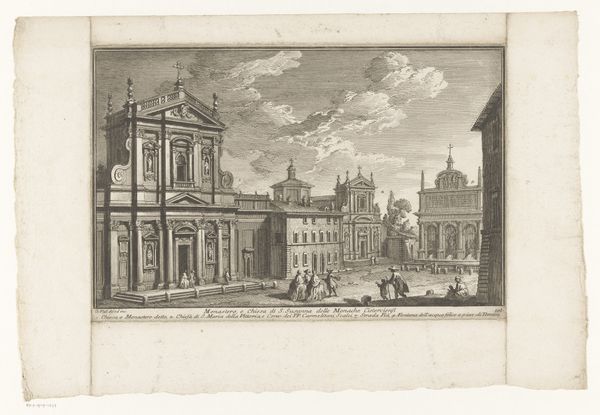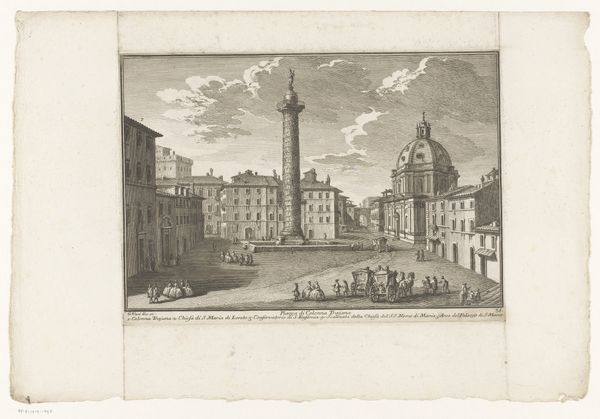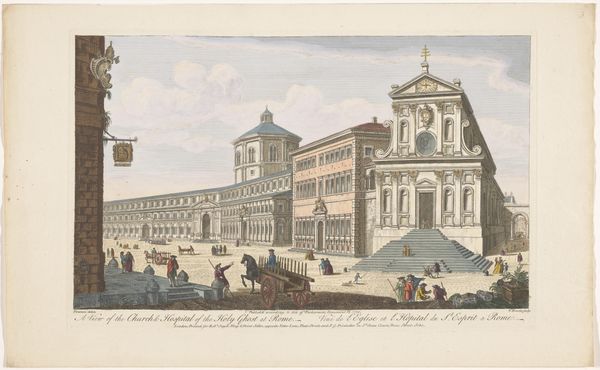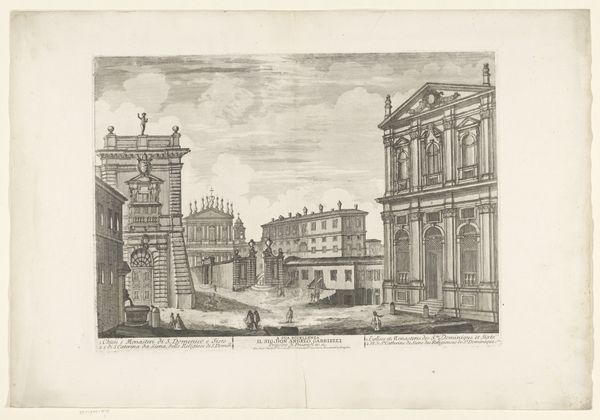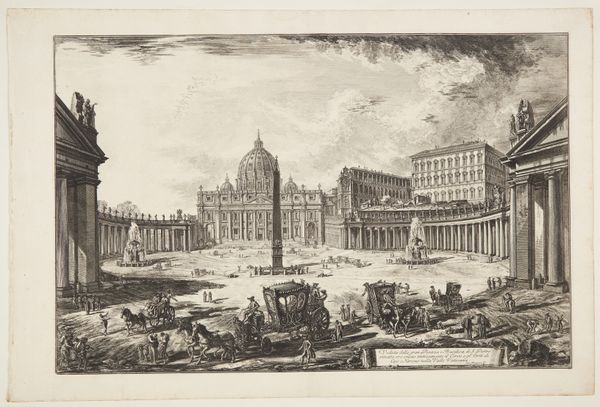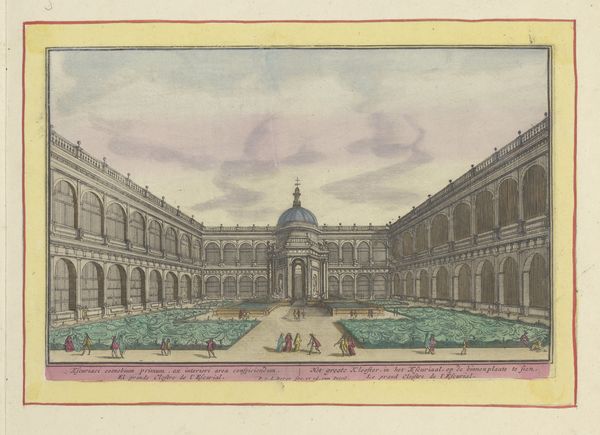
print, engraving, architecture
#
neoclacissism
# print
#
landscape
#
cityscape
#
engraving
#
architecture
Dimensions: height 274 mm, width 425 mm
Copyright: Rijks Museum: Open Domain
Robert Sayer created this print of the Church of St. John Lateran in Rome sometime in the 18th century. During this period, the Grand Tour was a rite of passage for wealthy Europeans, particularly the British, who sought to immerse themselves in the art, culture, and history of the continent. Sayer's print caters to this market, offering a picturesque view of a significant Roman landmark. However, it's important to consider the power dynamics inherent in such tourism. While the wealthy enjoyed access and privilege, the local populations often served as mere backdrops to their experiences. The scene feels staged, almost like a theater set, which in a way, it was. Representations like this helped shape perceptions of both the visited and the visitor, reinforcing existing social hierarchies. Look at the subtle details – the way people are placed in the scene, almost as props, rather than individuals with their own stories. Consider how this image might have influenced the identity and self-perception of those who embarked on the Grand Tour, and how it might have perpetuated a sense of cultural superiority.
Comments
No comments
Be the first to comment and join the conversation on the ultimate creative platform.
